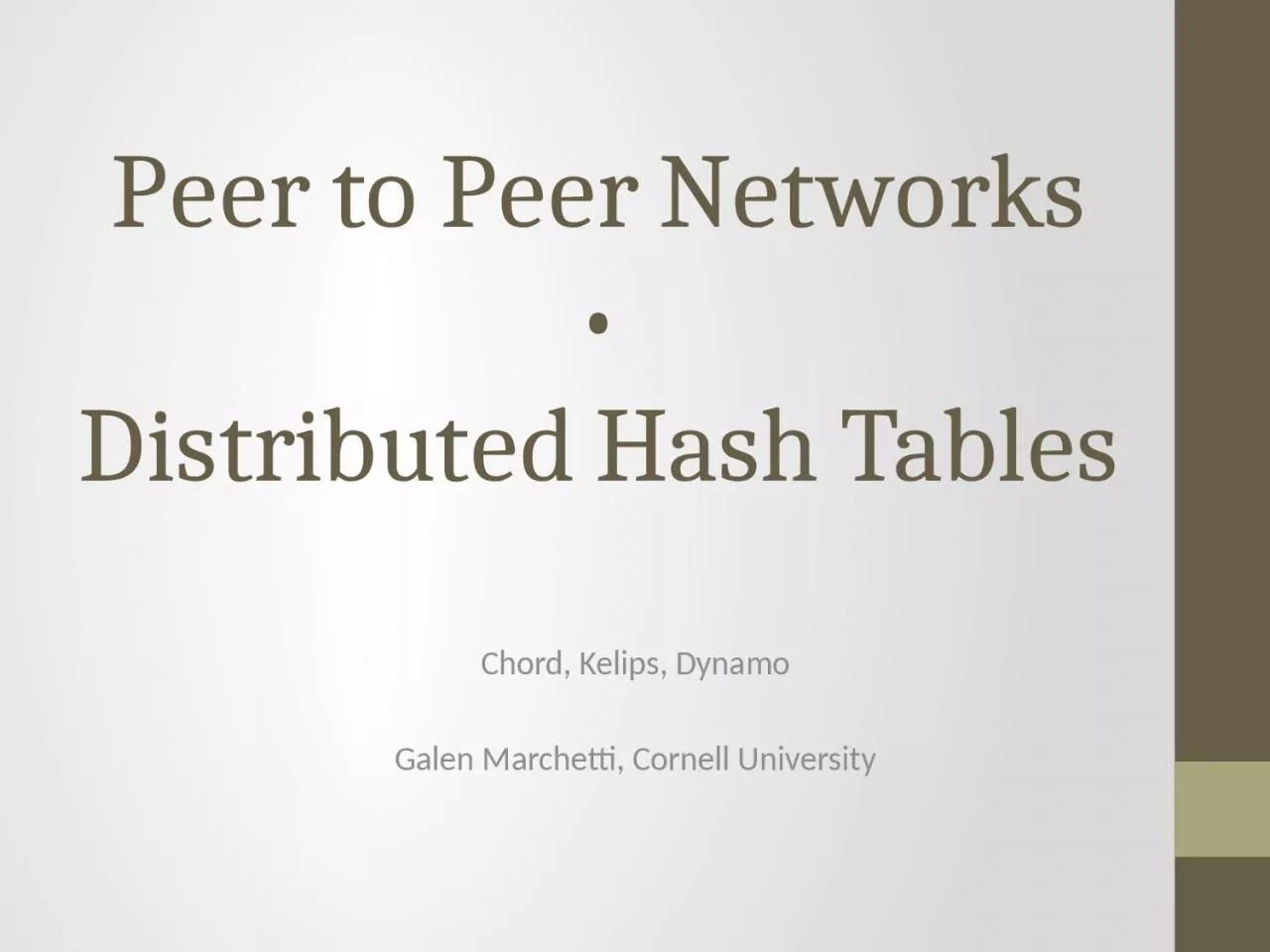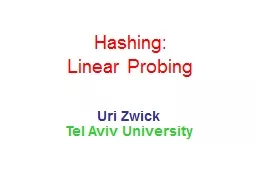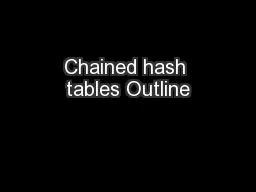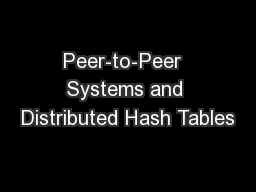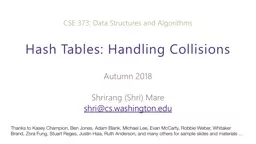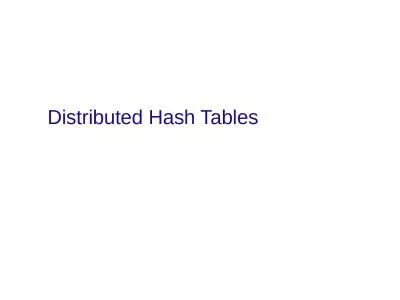PPT-Peer to Peer Networks Distributed Hash Tables
Author : pongre | Published Date : 2020-08-29
Distributed Hash Tables Chord Kelips Dynamo Galen Marchetti Cornell University 1960s 1999 Research Origins ARPANET every node requests and serves content No selforganization
Presentation Embed Code
Download Presentation
Download Presentation The PPT/PDF document "Peer to Peer Networks Distributed Hash T..." is the property of its rightful owner. Permission is granted to download and print the materials on this website for personal, non-commercial use only, and to display it on your personal computer provided you do not modify the materials and that you retain all copyright notices contained in the materials. By downloading content from our website, you accept the terms of this agreement.
Peer to Peer Networks Distributed Hash Tables: Transcript
Download Rules Of Document
"Peer to Peer Networks Distributed Hash Tables"The content belongs to its owner. You may download and print it for personal use, without modification, and keep all copyright notices. By downloading, you agree to these terms.
Related Documents

